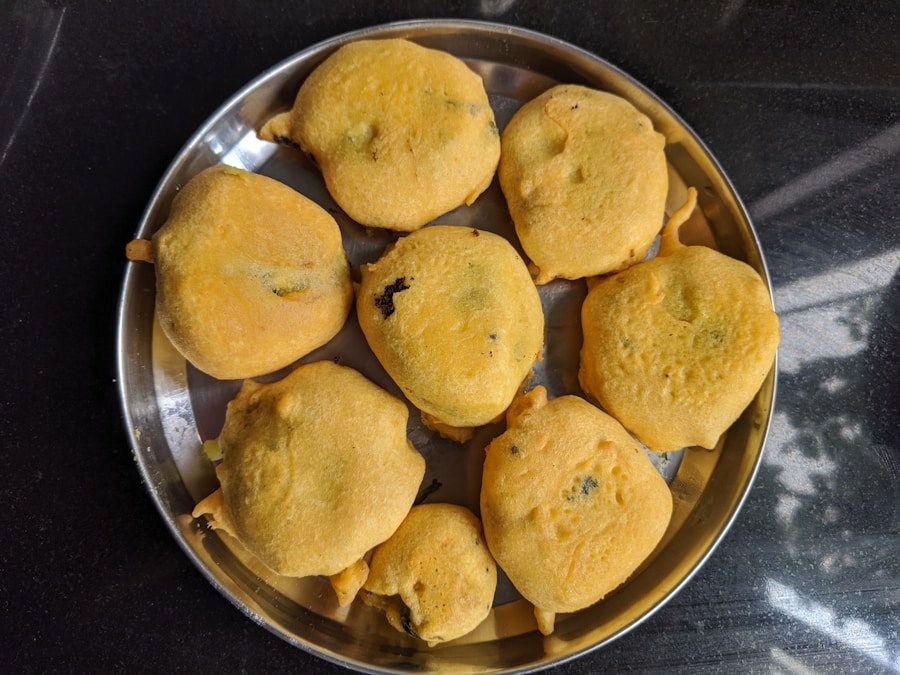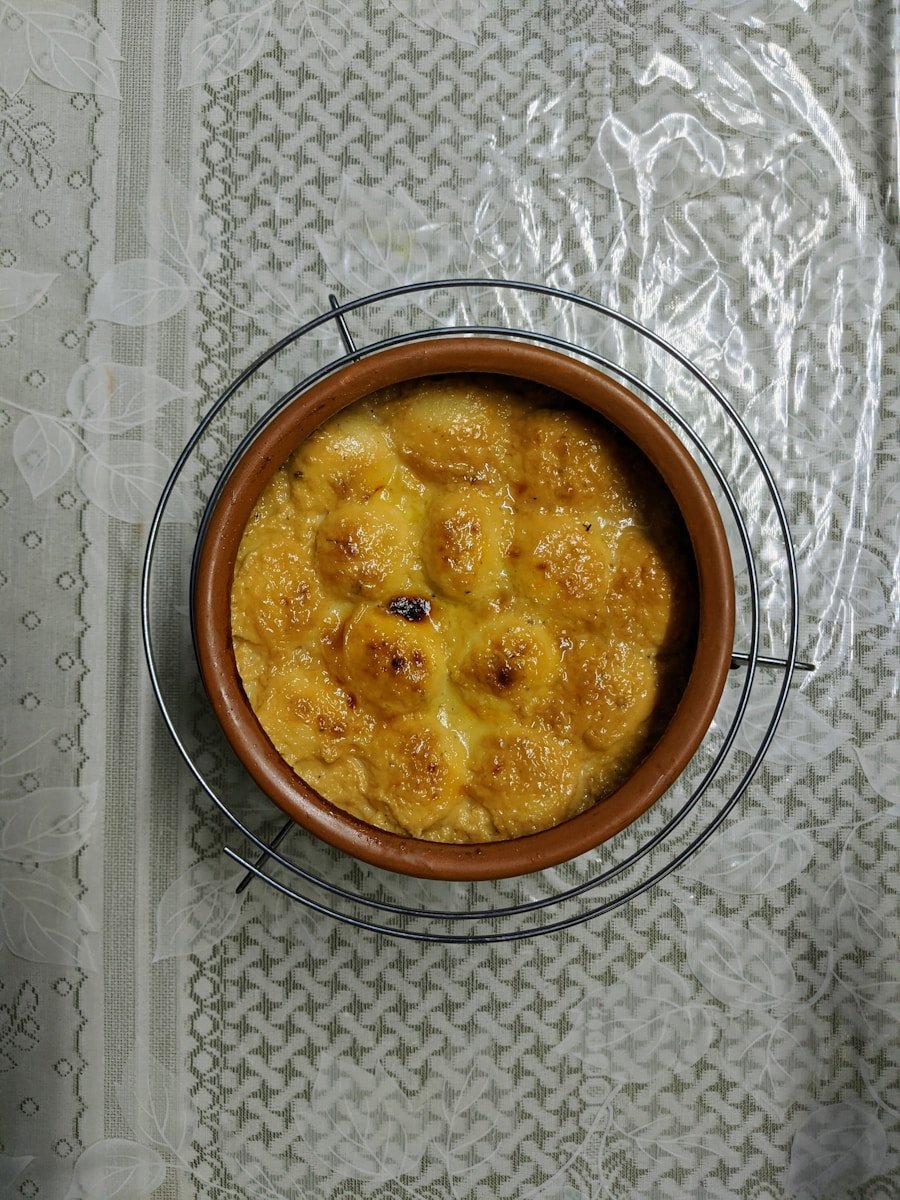Golumpki, a beloved dish in Polish cuisine, embodies the heart and soul of traditional Eastern European cooking. Often referred to as stuffed cabbage rolls, Golumpki consists of tender cabbage leaves enveloping a savory filling, typically made from ground meat and rice. The dish is not only a staple in Polish households but also resonates with many cultures across Europe, each adding its unique twist to the recipe.
The name “Golumpki” itself derives from the Polish word “gołąbki,” which translates to “little pigeons,” a nod to the shape of the rolls resembling small birds. The preparation of Golumpki is often a communal activity, bringing families together in the kitchen. It is a dish that evokes nostalgia, often associated with family gatherings, holidays, and celebrations.
The process of making Golumpki can be labor-intensive, but the end result is a comforting meal that warms both the body and spirit. As we delve deeper into the ingredients, preparation methods, and variations of this iconic dish, we will uncover the layers of flavor and tradition that make Golumpki a cherished culinary treasure.
Key Takeaways
- Golumpki is a traditional Polish dish made with cabbage leaves stuffed with a mixture of ground meat, rice, and spices, then baked in a tomato sauce.
- The main ingredients needed for Golumpki include cabbage, ground meat (such as pork or beef), rice, onion, garlic, tomato sauce, and spices like salt, pepper, and paprika.
- To make Golumpki, first blanch the cabbage leaves, then prepare the filling by mixing the cooked rice, ground meat, onion, garlic, and spices. Stuff the cabbage leaves with the filling, roll them up, and place them in a baking dish with tomato sauce. Bake until the cabbage is tender and the filling is cooked through.
- Tips for making the perfect Golumpki include using a meat and rice mixture that is well-seasoned, blanching the cabbage leaves until they are pliable, and ensuring that the rolls are tightly packed in the baking dish to prevent them from unraveling during cooking.
- Variations of Golumpki include using different types of meat, such as turkey or lamb, adding additional vegetables to the filling, or using different sauces for baking, such as a mushroom sauce or a sour cream-based sauce.
Ingredients needed for Golumpki
To create authentic Golumpki, one must gather a selection of key ingredients that contribute to its rich flavor profile. The primary component is, of course, cabbage. Green cabbage is typically used for its pliable leaves, which are perfect for wrapping around the filling.
The size and freshness of the cabbage head are crucial; larger leaves are easier to work with, while fresh cabbage ensures a tender texture after cooking. The filling is where personal preferences can shine through. A classic mixture includes ground meat—commonly beef or pork—combined with cooked rice or barley for added texture.
Seasonings such as salt, pepper, garlic, and onion are essential for enhancing the flavor. Some recipes may also incorporate herbs like dill or parsley for an aromatic touch. Additionally, tomato sauce or broth is often used in the cooking process to infuse moisture and flavor into the rolls as they simmer.
For those looking to add a twist, variations may include ingredients like mushrooms or smoked meats to elevate the dish further.
Step-by-step instructions for making Golumpki

The process of making Golumpki begins with preparing the cabbage leaves. Start by removing the core from a head of green cabbage and carefully boiling it in salted water until the leaves are pliable—this usually takes about 5 to 10 minutes. Once cooked, gently peel off the leaves and set them aside to cool.
Tips for making the perfect Golumpki
| Tip | Description |
|---|---|
| Use Cabbage Leaves | Choose large, flexible cabbage leaves to wrap the filling. |
| Parboil the Cabbage | Boil the cabbage leaves for a few minutes to make them pliable for rolling. |
| Season the Filling | Season the ground meat and rice filling with salt, pepper, and other desired spices. |
| Roll Tightly | Roll the cabbage leaves tightly around the filling to prevent them from unraveling during cooking. |
| Simmer in Tomato Sauce | Cook the golumpki in a flavorful tomato sauce to infuse them with additional flavor. |
Achieving perfection in Golumpki requires attention to detail and a few insider tips that can elevate your dish from good to exceptional. One crucial aspect is ensuring that your cabbage leaves are adequately cooked but not overly soft; they should be pliable enough to roll without breaking apart. If you find that your leaves are still too firm after boiling, you can return them to the pot for a few more minutes.
Another tip involves seasoning your filling generously. The meat mixture should be flavorful on its own since it will be encased in cabbage and simmered in sauce. Don’t hesitate to taste your filling before rolling it into leaves; this allows you to adjust seasoning as needed.
Additionally, consider adding a splash of Worcestershire sauce or soy sauce for an umami boost. When it comes to cooking, patience is key. Allowing the Golumpki to simmer slowly will enhance their flavor as they absorb the sauce’s richness.
If you have time, consider letting them rest after cooking; this allows the flavors to meld even further. For those who enjoy a bit of crunch, you can finish them off under the broiler for a few minutes after simmering to achieve a slightly crispy top.
Variations of Golumpki
While traditional Golumpki features ground meat and rice as its core filling, there are numerous variations that reflect regional preferences and dietary needs. For instance, vegetarian versions can be created by substituting meat with lentils or quinoa mixed with vegetables such as mushrooms, carrots, and bell peppers. This not only caters to plant-based diets but also introduces new textures and flavors.
In some regions, particularly in Ukraine and Hungary, Golumpki may be prepared with different types of grains or legumes as part of the filling. For example, buckwheat is often used in Ukrainian recipes, providing a nutty flavor that complements the cabbage beautifully. Additionally, some variations incorporate spices like paprika or cumin for an added kick.
Another interesting twist on Golumpki can be found in its presentation and serving style. In certain cultures, instead of rolling individual cabbage leaves, the dish may be prepared as a layered casserole where chopped cabbage is layered with meat and rice filling and baked in sauce. This method simplifies preparation while still delivering all the comforting flavors associated with traditional Golumpki.
Serving suggestions for Golumpki

When it comes to serving Golumpki, presentation can enhance the dining experience significantly. Traditionally, these stuffed cabbage rolls are served hot from the pot with a generous ladle of tomato sauce drizzled over them. A sprinkle of fresh herbs like parsley or dill can add a pop of color and freshness to the dish.
For sides, consider pairing Golumpki with crusty bread or rolls to soak up any extra sauce on the plate. A simple green salad dressed with vinaigrette can provide a refreshing contrast to the rich flavors of the rolls. Additionally, mashed potatoes or buttery noodles are popular accompaniments that complement the hearty nature of Golumpki.
For those looking to elevate their meal further, serving Golumpki alongside pickled vegetables or sauerkraut can introduce an exciting tanginess that balances out the richness of the dish. A dollop of sour cream on top can also add creaminess and enhance the overall flavor profile.
History and cultural significance of Golumpki in Poland
Golumpki has deep roots in Polish history and culture, tracing back centuries as a staple dish among peasant families who relied on simple yet nourishing ingredients. The use of cabbage as a wrapping for various fillings reflects resourcefulness in utilizing available produce while minimizing waste—a practice that resonates with many traditional cuisines around the world. In Poland, Golumpki is often associated with family gatherings and festive occasions such as Christmas Eve dinner (Wigilia) or weddings.
The dish symbolizes hospitality and warmth, embodying the spirit of sharing food with loved ones. Each family may have its unique recipe passed down through generations, making it not just a meal but also a cherished tradition that connects people to their heritage. Moreover, Golumpki has transcended borders and found its way into various cultures across Eastern Europe and beyond—each adapting it according to local tastes and ingredients.
This adaptability speaks volumes about its universal appeal and significance as comfort food that brings people together around the table.
Conclusion and final thoughts on Golumpki
Golumpki stands as more than just a dish; it represents a rich tapestry of cultural heritage and familial bonds woven through generations of shared meals and traditions. Its versatility allows for endless adaptations while maintaining its core essence—a comforting combination of flavors wrapped in tender cabbage leaves. As we explore this iconic dish’s ingredients, preparation methods, variations, and cultural significance, we gain insight into why Golumpki continues to hold a special place in hearts and homes around the world.
Whether enjoyed during festive occasions or as an everyday meal, Golumpki remains a testament to the power of food in fostering connection and celebrating heritage.
FAQs
What is a golumpki?
Golumpki, also known as golabki, is a traditional Polish dish made of cabbage leaves stuffed with a mixture of ground meat, rice, and seasonings, then baked in a tomato sauce.
What are the ingredients for making golumpki?
The ingredients for making golumpki typically include cabbage leaves, ground meat (such as beef, pork, or a combination), cooked rice, onions, garlic, salt, pepper, and tomato sauce.
How do you make golumpki?
To make golumpki, you first blanch the cabbage leaves to make them pliable. Then, you prepare the filling by combining the ground meat, cooked rice, onions, garlic, salt, and pepper. Next, you fill each cabbage leaf with the meat mixture, roll it up, and place it in a baking dish. Finally, you cover the golumpki with tomato sauce and bake until cooked through.
What is the origin of golumpki?
Golumpki is a traditional Polish dish that has been enjoyed for generations. It is a popular comfort food in Poland and is often served at family gatherings and special occasions.
What are some variations of golumpki?
There are many variations of golumpki, with different regions and families having their own unique recipes. Some variations include using different types of meat, adding additional vegetables to the filling, or using a different sauce for baking.
